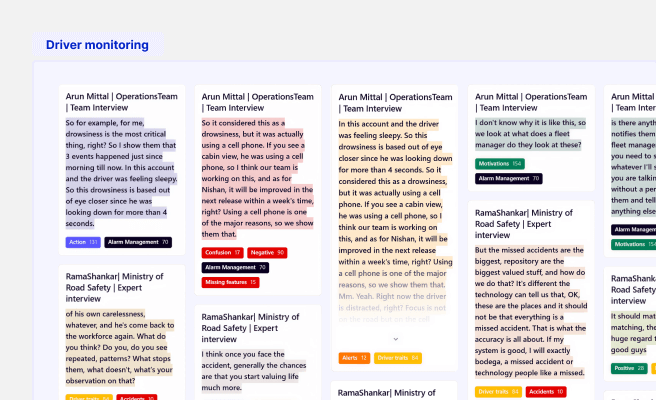Innovation Pipeline
<p>The innovation pipeline is a crucial component for any organization aiming to maintain a competitive edge, particularly in industries driven by technological advancements such as digital design and climate tech. It refers to the structured process through which new ideas are generated, evaluated, developed, and brought to market. This systematic approach ensures that innovation is not left to chance but is a continuous and manageable process.</p>
<p>Historically, many organizations have relied on ad-hoc methods for innovation, often leading to inconsistent results and missed opportunities. The innovation pipeline, however, offers a more predictable and repeatable path to bring innovative ideas from conception to implementation.</p>
<h2>Components of an Innovation Pipeline</h2>
<p>The innovation pipeline typically comprises several key stages:</p>
<h3>1. Idea Generation</h3>
<p>This is the initial stage where ideas are collected from various sources, including employees, customers, market research, and competitive analysis. Tools like brainstorming sessions, innovation workshops, and suggestion boxes can be useful here. For example, companies like <a href="https://www.frogdesign.com" style="color: #2896FF; text-decoration: underline;">Frog Design</a> integrate customer feedback and emerging technology trends to generate new ideas continuously.</p>
<h3>2. Idea Screening</h3>
<p>Once ideas are generated, they must be evaluated to filter out those that do not align with the company's strategic goals or are not feasible. This stage involves criteria-based assessment, feasibility studies, and risk analysis.</p>
<h3>3. Concept Development</h3>
<p>Promising ideas are then developed into detailed concepts. This includes market research to understand the potential demand, cost analysis, and initial design mockups. Companies like <a href="https://www.ideo.com" style="color: #2896FF; text-decoration: underline;">IDEO</a> excel in turning raw ideas into tangible concepts through extensive prototyping and user testing.</p>
<h3>4. Business Analysis</h3>
<p>This stage involves a thorough analysis of the business potential of the concept. Market size, competitive landscape, pricing strategy, and profitability are analyzed to ensure the idea can be financially viable.</p>
<h3>5. Product Development</h3>
<p>Once a concept passes the business analysis stage, it moves into product development. This includes detailed design, engineering, and creation of prototypes. Tools like <a href="https://www.autodesk.com/products/fusion-360/overview" style="color: #2896FF; text-decoration: underline;">Autodesk Fusion 360</a> and <a href="https://www.adobe.com/products/xd.html" style="color: #2896FF; text-decoration: underline;">Adobe XD</a> are commonly used in this phase to create and test digital product designs.</p>
<h3>6. Market Testing</h3>
<p>Before a full-scale launch, the product is tested in the market to gather feedback and make necessary adjustments. This can involve beta testing with selected customers or limited market release. Climate tech companies, for instance, might test a new carbon capture technology with a small group of industrial clients before a wider rollout.</p>
<h3>7. Commercialization</h3>
<p>The final stage is bringing the product to market. This includes production, marketing, sales, and distribution. A successful commercialization strategy ensures that the product reaches its target audience effectively and achieves its sales targets.</p>
<h2>Benefits of an Innovation Pipeline</h2>
<p>An innovation pipeline provides numerous benefits, including:</p>
<p><b>1. Structured Process:</b> It offers a clear framework for managing innovation, reducing uncertainty and increasing the chances of success.</p>
<p><b>2. Focused Efforts:</b> By aligning innovation efforts with strategic goals, companies can ensure that resources are invested in the most promising opportunities.</p>
<p><b>3. Improved Efficiency:</b> Streamlining the innovation process helps in reducing time-to-market and minimizes wasted efforts on ideas that are unlikely to succeed.</p>
<h2>Challenges in Implementing an Innovation Pipeline</h2>
<p>Despite its benefits, implementing an innovation pipeline can be challenging:</p>
<p><b>1. Resource Allocation:</b> Ensuring that adequate resources are available at each stage can be difficult, especially for smaller organizations.</p>
<p><b>2. Cultural Resistance:</b> Employees may resist changes in processes or be reluctant to share ideas due to fear of failure or criticism.</p>
<p><b>3. Maintaining Momentum:</b> Keeping the innovation pipeline active requires continuous effort and commitment from all levels of the organization.</p>
<h2>Overcoming Challenges</h2>
<p>To overcome these challenges, organizations can:</p>
<p><b>1. Foster a Culture of Innovation:</b> Encourage creativity and risk-taking by recognizing and rewarding innovative ideas and efforts.</p>
<p><b>2. Provide Training and Tools:</b> Equip employees with the necessary skills and tools to contribute effectively to the innovation process. Companies like <a href="https://www.whatifdesign.com" style="color: #2896FF; text-decoration: underline;">What if Design</a> offer specialized training programs for sustainable product development.</p>
<p><b>3. Engage Leadership:</b> Ensure that top management is actively involved in driving and supporting innovation initiatives.</p>
<h2>Conclusion</h2>
<p>The innovation pipeline is an essential mechanism for organizations seeking to continuously innovate and stay ahead in competitive markets. By systematically managing the flow of ideas from generation to commercialization, companies can enhance their ability to bring successful new products to market. For those in the digital design and climate tech sectors, leveraging a robust innovation pipeline can lead to the development of groundbreaking solutions that drive business growth and sustainability.</p>
<p>Learn more about improving your innovation strategies by exploring resources like <a href="https://www.smartdesignworldwide.com" style="color: #2896FF; text-decoration: underline;">Smart Design</a> and <a href="https://www.rga.com" style="color: #2896FF; text-decoration: underline;">R/GA</a>.</p> <p>Increase user engagement that converts your demos into sales. Optimise your UX strategies with our audits.
<p>Fill out the <a href="https://tally.so/r/n97pxQ" style="color:#2896FF; text-decoration:underline;">UX Audit form</a> to get started. Ready to discuss your needs? <a href="https://cal.com/akhilak/what-if-design?duration=25" style="color:#2896FF; text-decoration:underline;">Book a consultation call</a> with us today.</p></p>

Let's scale your impact with great design.
Free consultation, no sales pitch
Thank you! Your submission has been received!
Oops! Something went wrong while submitting the form.
Let’s talk
Nothing great is built alone.
Let’s connect about your vision, our work and how we can collaborate.
Get in touch

